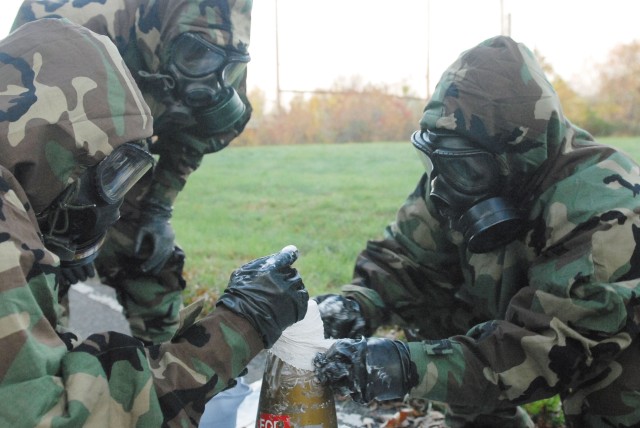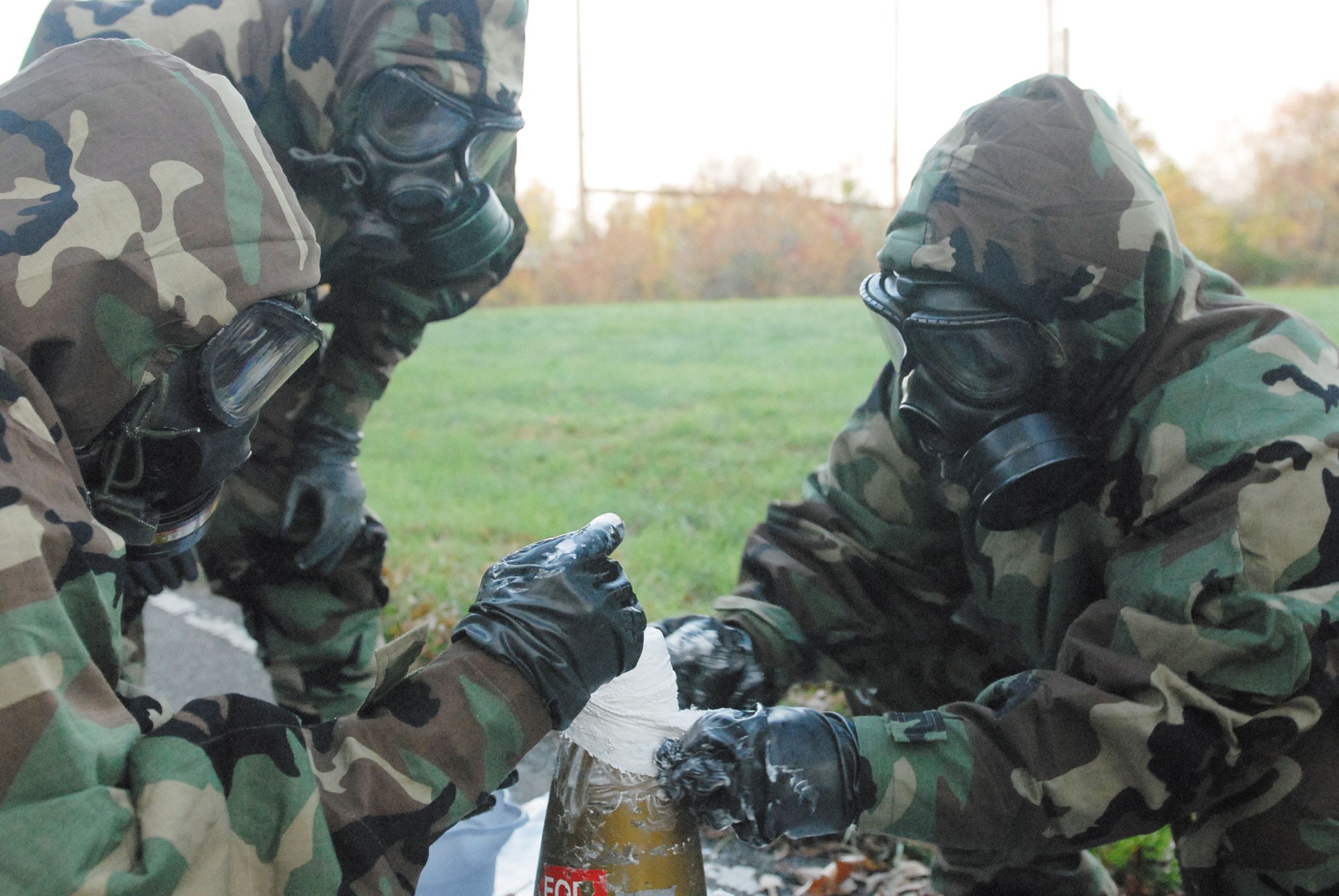ABERDEEN PROVING GROUND, MD - Physical and mental fitness have long been pillars of the U.S. Army, so it is no surprise that Company A, 22d Chemical Battalion, (Technical Escort) gathered in the pre-dawn hours Nov. 6 for their workout. Like many other Army units, Company A is committed to being physically fit.
At quarter-past six in the morning, the sounds on the Edgewood Area of Aberdeen Proving Ground are few, but distinct.
A bird chirps to signal the start of the new day; a car moves down Magnolia Road, its occupant undoubtedly on the way to work.
On a side street, there's the authoritative voice of 1st Lt. Maritzabel Mustafaa shouting in the pre-dawn air.
"Everybody listen up," Mustafaa says, her voice as loud as necessary to get her Soldiers' attention.
She gives a safety briefing to the Soldiers of Company A as they prepare for a workout.
But this is no ordinary workout.
Dressed in full personal protective equipment - chemical suits, gas masks, gloves and boots -the Soldiers of Company A prepare to run a two-mile course.
Mustafaa, a battalion team leader, organized the workout known as, "Responder's Challenge." During the exercise, two Company A teams raced the two-mile course, stopping every quarter mile to face a challenge they might face in a chemical response situation.
"We wanted to combine physical fitness and combat-focused training and test the ability of each team to conduct chemical response," she said.
The 22d Chemical Battalion's mission is to provide chemical, biological, radiological, nuclear and high-yield explosives, or CBRNE, response in support of military operations and civil authorities.
The unit is no stranger to deployment, members of the command having mobilized numerous times to Iraq and Afghanistan in support of the Global War on Terrorism.
The clock begins. The first team races toward the quarter-mile point.
A casualty, a mannequin for training purposes, lies on the road. They load the victim on a litter and run another quarter mile.
At the half-mile point they treat a victim who has been exposed to a nerve agent. They safely cut the victim's outer clothing.
As they continue, they stop to seal a chemical leak, drop off a chemical round, take samples and transport hazardous materials - jobs they routinely perform as CBRNE warriors.
Before reaching the finish line, they answer a technical question posed by Staff Sgt. James Hunt. They receive the all-clear as they finish their run.
As they begin to remove their chemical gear, drenched in perspiration, they are reminded that nothing in the Army is accomplished alone.
"Help your buddy out," Hunt yelled.
The Soldiers helped each other remove their PPE.
The first team, comprised of Company A veterans, finished in 48 minutes.
"The training was good," Sgt. David Williamson said, catching his breath. "The scenarios were realistic and caused you to think on your feet."
The first team gained confidence as chemical responders and earned bragging rights as the fastest team.
The second team, mostly new members to the unit, was not discouraged. They had a few bragging rights of their own.
"We only lost by five minutes," Staff Sgt. Rigaud Julien said. "That's not bad for a bunch of new kids on the block."
As traffic in the area began to pick up and the sun rose a little higher in the sky, all the Soldiers said their success was due to their dedication and perseverance.
"You've got to contract the core," Staff Sgt. Tobias Bivines said of the physical challenge. "You go deep and pull out everything that's inside of you."








Social Sharing